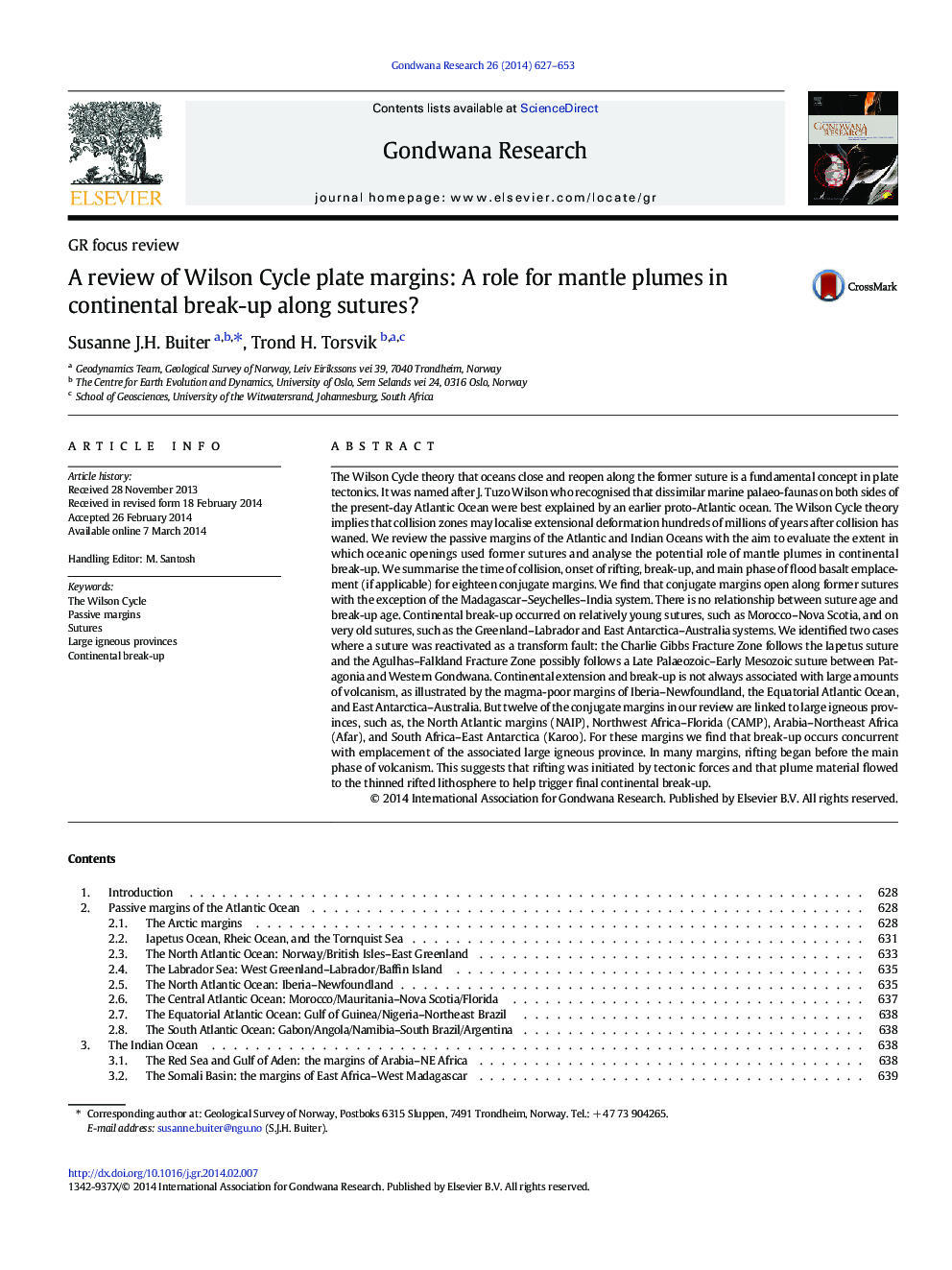| کد مقاله | کد نشریه | سال انتشار | مقاله انگلیسی | نسخه تمام متن |
|---|---|---|---|---|
| 4727292 | 1356368 | 2014 | 27 صفحه PDF | دانلود رایگان |
• Continental break-up preferentially occurs on former collision zones.
• Continental break-up may occur along young or old sutures.
• If break-up occurs close to LIPs, break-up and LIP eruption occur simultaneously.
The Wilson Cycle theory that oceans close and reopen along the former suture is a fundamental concept in plate tectonics. It was named after J. Tuzo Wilson who recognised that dissimilar marine palaeo-faunas on both sides of the present-day Atlantic Ocean were best explained by an earlier proto-Atlantic ocean. The Wilson Cycle theory implies that collision zones may localise extensional deformation hundreds of millions of years after collision has waned. We review the passive margins of the Atlantic and Indian Oceans with the aim to evaluate the extent in which oceanic openings used former sutures and analyse the potential role of mantle plumes in continental break-up. We summarise the time of collision, onset of rifting, break-up, and main phase of flood basalt emplacement (if applicable) for eighteen conjugate margins. We find that conjugate margins open along former sutures with the exception of the Madagascar–Seychelles–India system. There is no relationship between suture age and break-up age. Continental break-up occurred on relatively young sutures, such as Morocco–Nova Scotia, and on very old sutures, such as the Greenland–Labrador and East Antarctica–Australia systems. We identified two cases where a suture was reactivated as a transform fault: the Charlie Gibbs Fracture Zone follows the Iapetus suture and the Agulhas–Falkland Fracture Zone possibly follows a Late Palaeozoic–Early Mesozoic suture between Patagonia and Western Gondwana. Continental extension and break-up is not always associated with large amounts of volcanism, as illustrated by the magma-poor margins of Iberia–Newfoundland, the Equatorial Atlantic Ocean, and East Antarctica–Australia. But twelve of the conjugate margins in our review are linked to large igneous provinces, such as, the North Atlantic margins (NAIP), Northwest Africa–Florida (CAMP), Arabia–Northeast Africa (Afar), and South Africa–East Antarctica (Karoo). For these margins we find that break-up occurs concurrent with emplacement of the associated large igneous province. In many margins, rifting began before the main phase of volcanism. This suggests that rifting was initiated by tectonic forces and that plume material flowed to the thinned rifted lithosphere to help trigger final continental break-up.
Figure optionsDownload as PowerPoint slide
Journal: Gondwana Research - Volume 26, Issue 2, September 2014, Pages 627–653
